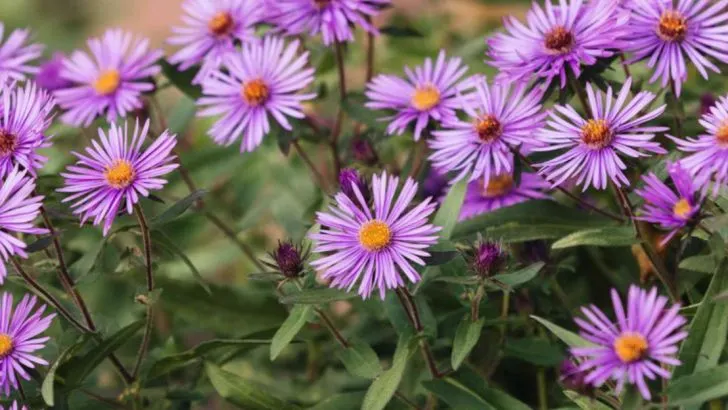Native plants are essential for supporting local ecosystems, attracting pollinators, and creating resilient, low-maintenance gardens. If you’re gardening in the Northeast, incorporating native plants can enhance biodiversity while thriving in the region’s climate. Here are 25 top native plants of the Northeast that will bring beauty and sustainability to your landscape.
Eastern Red Columbine
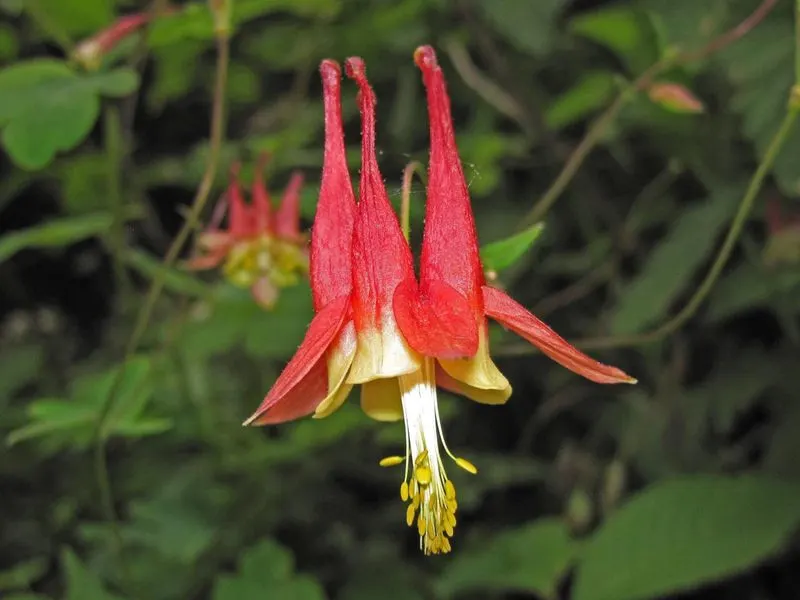
With its striking red and yellow flowers, Aquilegia canadensis brightens up any shaded garden. These nodding blooms attract hummingbirds, adding lively movement to your garden. Thriving in well-drained soil, it offers elegance without demanding constant attention. Plant these to enjoy a burst of color during spring. They adapt well to both shade and partial sun, making them versatile additions to woodland gardens. Their unique shape adds architectural interest. Incorporating them into your landscape design helps support pollinators. Ideal for borders or rock gardens, this plant’s graceful presence is sure to enchant.
New England Aster
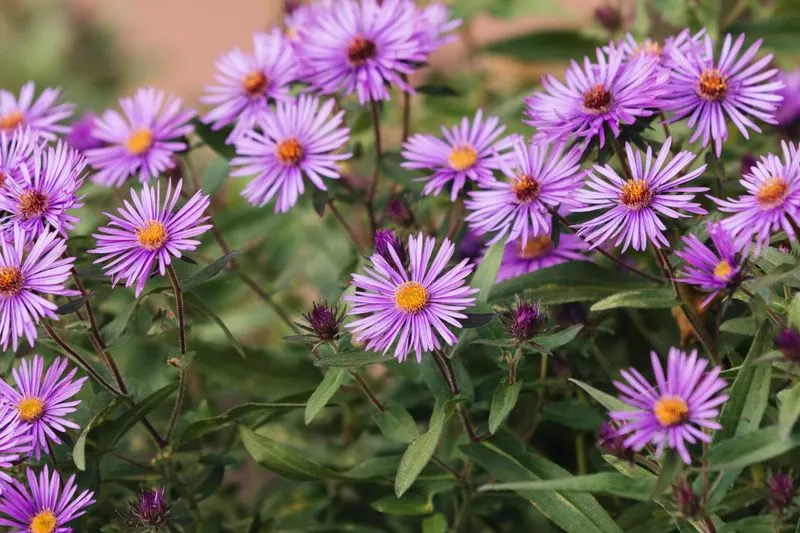
A splash of purple in fall, Symphyotrichum novae-angliae transforms landscapes. Its vibrant petals surround a golden center, making it a magnet for butterflies. With a preference for sunny spots, these asters flourish in meadows and gardens alike. They offer a late-season nectar source when few others bloom. Tolerant of various soil types, they are resilient and low-maintenance. Plant them en masse for a stunning visual effect. Their tall stature makes them great for the back of borders. As a native plant, they contribute positively to local ecosystems.
Wild Bergamot
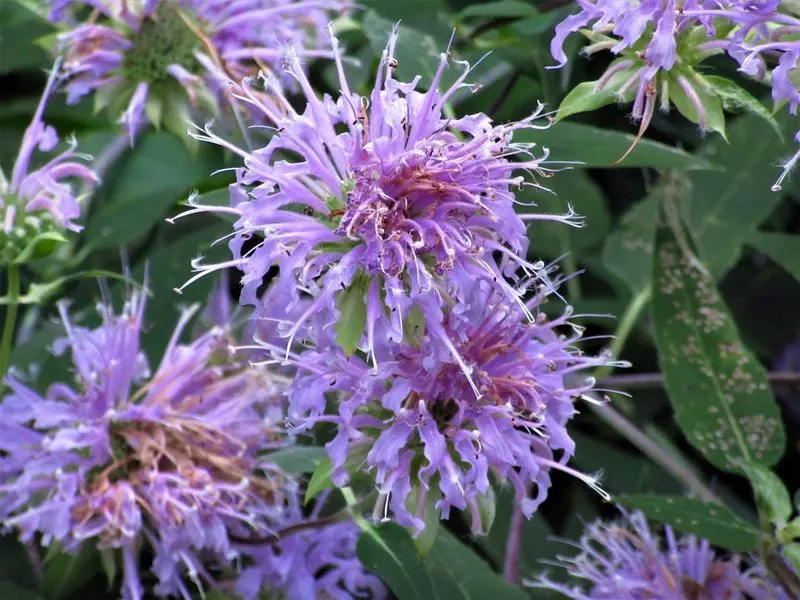
Monarda fistulosa’s lavender blooms are a sight to behold. Loved by bees and butterflies, they bring buzzing activity to your garden. Their aromatic leaves can be used for tea, offering a delightful herbal experience. Thriving in open, sunny areas, they’re drought-tolerant once established. These perennials add height and texture to plantings, with their unique flower shape. Perfect for a wildflower garden, they blend well with other natives. Their long blooming period ensures months of beauty. An excellent choice for attracting pollinators and for naturalizing landscapes.
Joe-Pye Weed
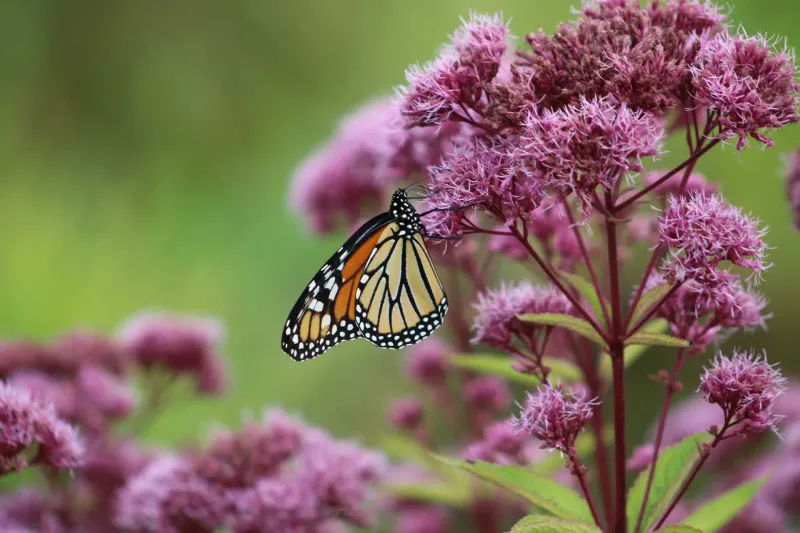
Eupatorium maculatum stands tall, with clusters of mauve flowers that sway elegantly. Found in wetlands, these perennials are perfect for rain gardens. They attract butterflies, providing a steady food source. Their tall stems add vertical interest to landscapes. Tolerant of moist soils, they are an excellent choice for challenging areas. Planting them supports local pollinators and enhances biodiversity. Their robust nature means they require little care once established. Use them to create a dynamic display in naturalistic plantings.
Black-Eyed Susan
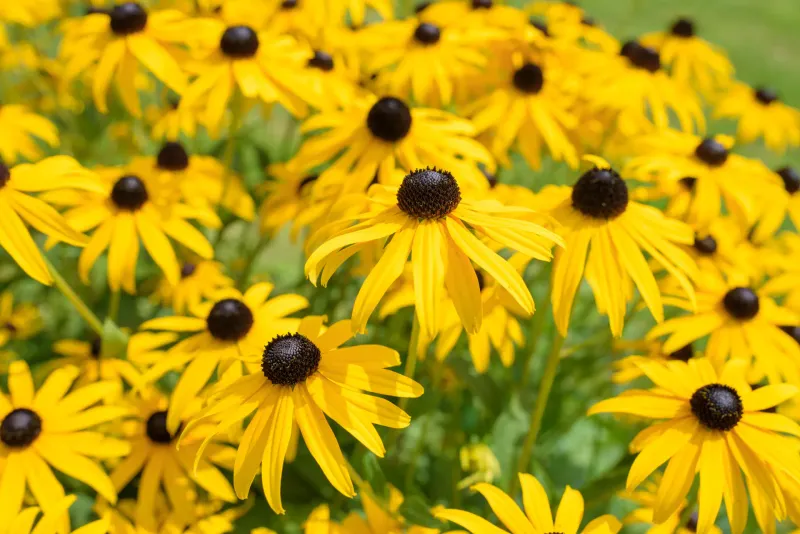
Rudbeckia hirta, known for its cheerful yellow petals and dark centers, is a staple in many gardens. This sun-loving plant thrives in a variety of soil conditions, making it versatile and easy to grow. Its extended blooming period brings continuous color to landscapes. Ideal for both formal and informal settings, they provide a sunny disposition wherever they are planted. These flowers attract butterflies and other pollinators, supporting the ecosystem. Their resilience against drought makes them a low-maintenance choice. A classic favorite that pairs well with other perennials.
Smooth Hydrangea
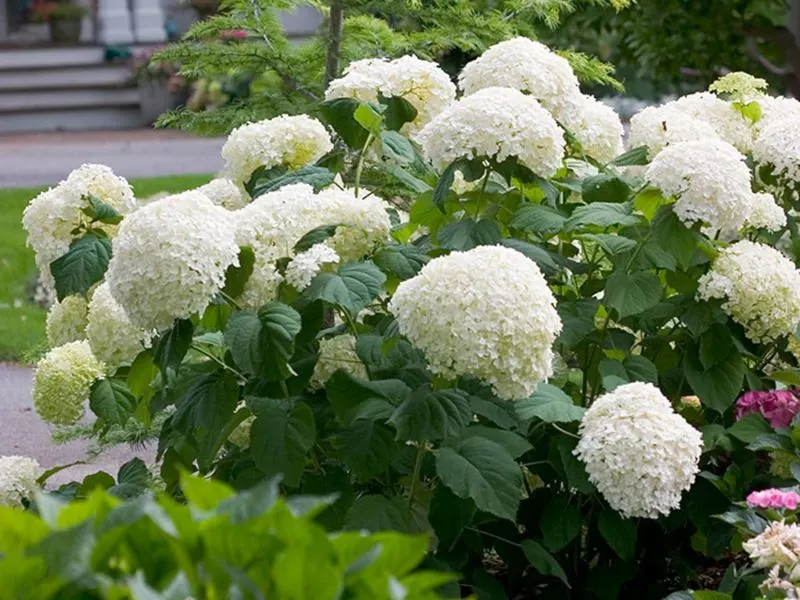
Hydrangea arborescens, with its large, white flower heads, illuminates shaded areas. These shrubs are adaptable, thriving in various light conditions. Their blooms persist from summer through fall, adding lasting beauty. Perfect for creating focal points or hedges, they offer structure to gardens. Tolerant of pruning, they can be shaped to fit any design. As a native, they contribute to local biodiversity. Excellent for cut flowers, they bring elegance indoors. Their ability to thrive in shade makes them invaluable for challenging garden spots.
Purple Coneflower
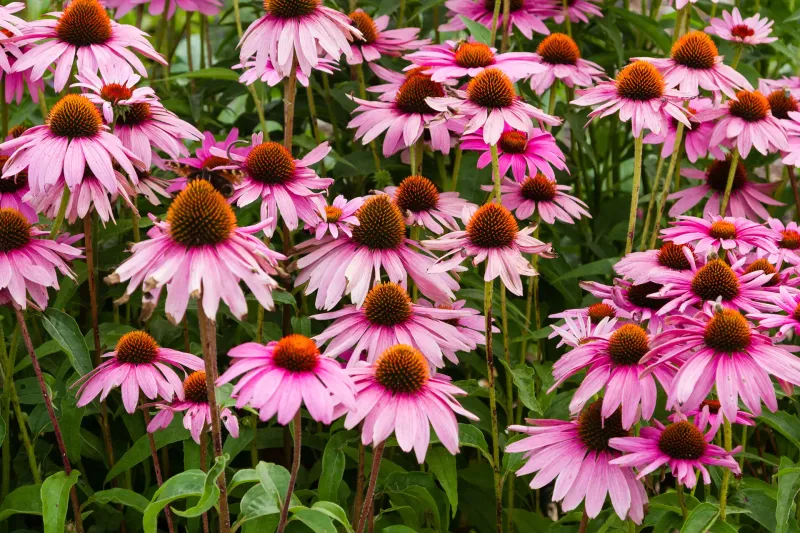
Echinacea purpurea dazzles with its bright pink petals and distinctive centers. Known for attracting pollinators, these flowers bring life to gardens. They thrive in sunny locations and are drought-tolerant, perfect for low-maintenance yards. Their seeds provide food for birds in the winter, adding year-round interest. Ideal for mixed borders, they blend well with other perennials. Their sturdy stems make them excellent for cutting gardens. Incorporating them into landscapes enhances ecological health. A must-have for those looking to support local wildlife and enjoy vibrant blooms.
Switchgrass
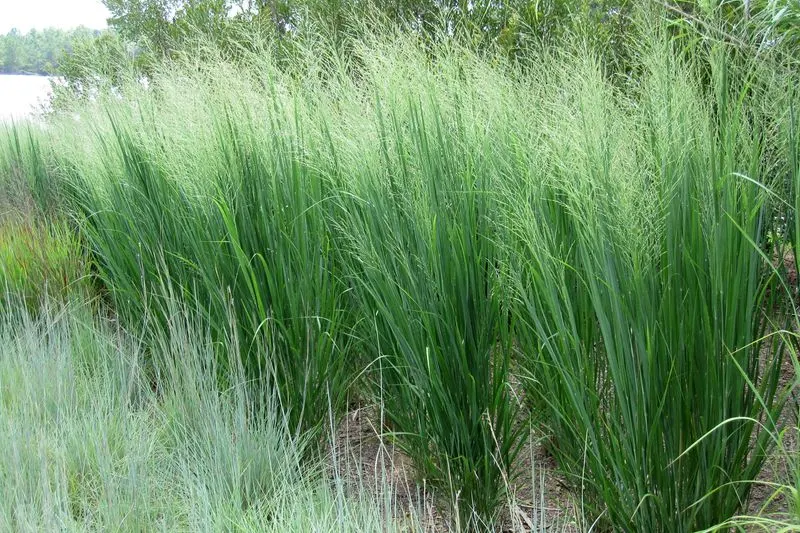
Panicum virgatum is a graceful grass, known for its airy plumes and versatility. Thriving in a range of conditions, it adds movement and texture to landscapes. This native grass supports wildlife, offering cover and food. Ideal for erosion control, its roots stabilize soil effectively. Its beautiful form provides a backdrop for flowering plants. In autumn, its foliage turns a striking golden hue. It requires minimal maintenance, making it ideal for sustainable gardens. Use it to enhance ecological diversity and visual appeal in your garden spaces.
Cardinal Flower
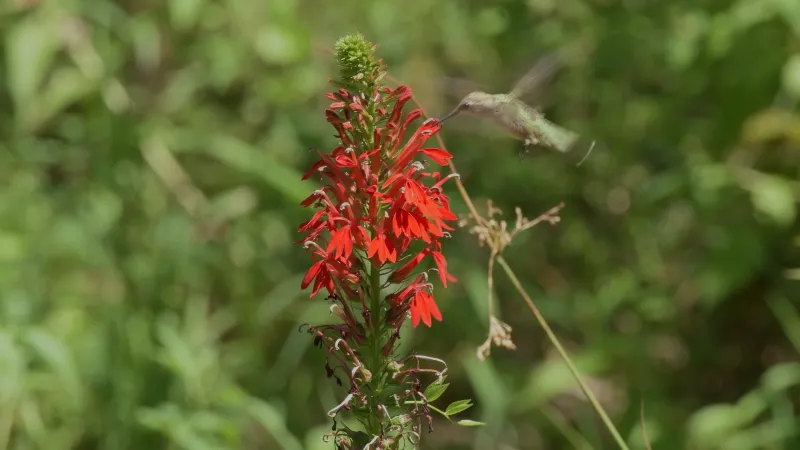
Lobelia cardinalis captivates with its brilliant red spikes. Found naturally along stream banks, it thrives in moist conditions. Hummingbirds flock to its nectar-rich flowers, adding dynamic energy to your landscape. Perfect for rain gardens or water features, it brings vibrant color to wet areas. Its tall stems provide vertical interest, complementing lower-growing plants. While it needs consistent moisture, it rewards with stunning blooms. Native to the Northeast, it supports local wildlife. An excellent choice for adding a splash of red to gardens looking to attract hummingbirds.
Blue Flag Iris
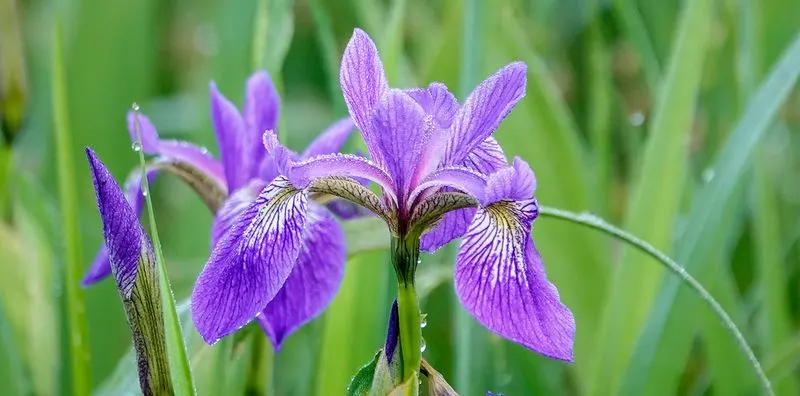
Iris versicolor graces wetland areas with its striking blue flowers. Thriving in moist to wet soils, it’s perfect for pond edges or rain gardens. Its vibrant blooms attract a variety of pollinators, supporting ecological health. The sword-like foliage adds vertical interest even when not in bloom. Ideal for naturalistic plantings, they blend seamlessly with other moisture-loving plants. Plant them en masse for dramatic effect. Their hardiness and adaptability make them a reliable choice. A native treasure that enhances water features with elegance and color.
Virginia Bluebells
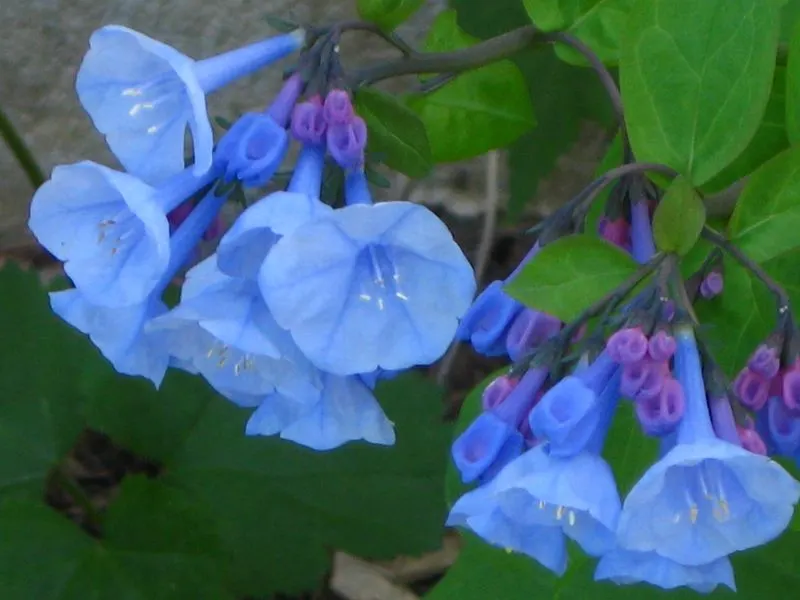
Mertensia virginica offers enchanting bell-shaped flowers that transition from pink to blue. Preferring shaded, moist woodlands, they are perfect for early spring color. As ephemeral perennials, they bloom and set seed before summer arrives. Their foliage disappears post-bloom, allowing other plants to take center stage. They require little maintenance once established. Plant them with other spring bloomers for a continuous display. Their unique color-changing blossoms attract early pollinators. A charming choice for woodland gardens or shaded borders that seeks to capture spring’s fleeting beauty.
Wild Ginger
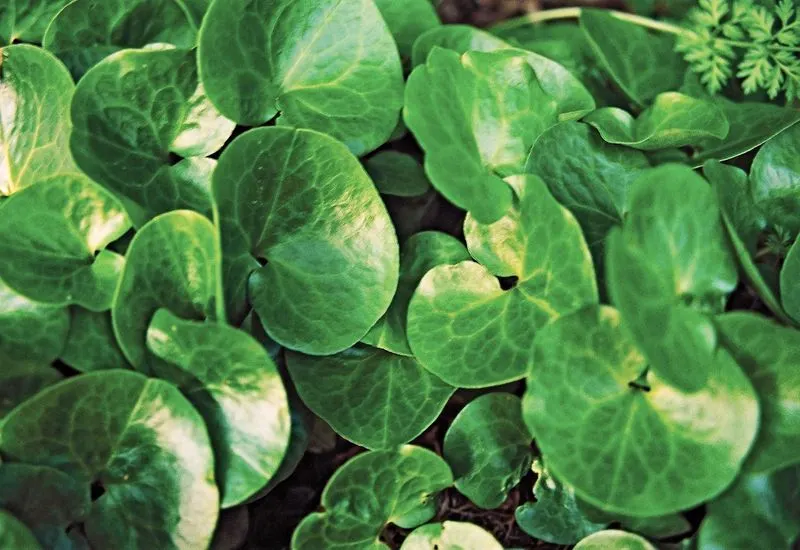
Asarum canadense provides lush, heart-shaped leaves that create a dense ground cover. Thriving in shaded areas, it’s perfect for woodland gardens. This native plant offers a subtle, understated beauty with its hidden maroon flowers. Its leaves suppress weeds, reducing garden maintenance. Ideal for stabilizing soil on slopes, it adds ecological value to gardens. Their hardy nature makes them easy to grow. Incorporate into shaded borders or under trees for a natural look. A valuable addition for those seeking to promote biodiversity with minimal effort.
Spicebush
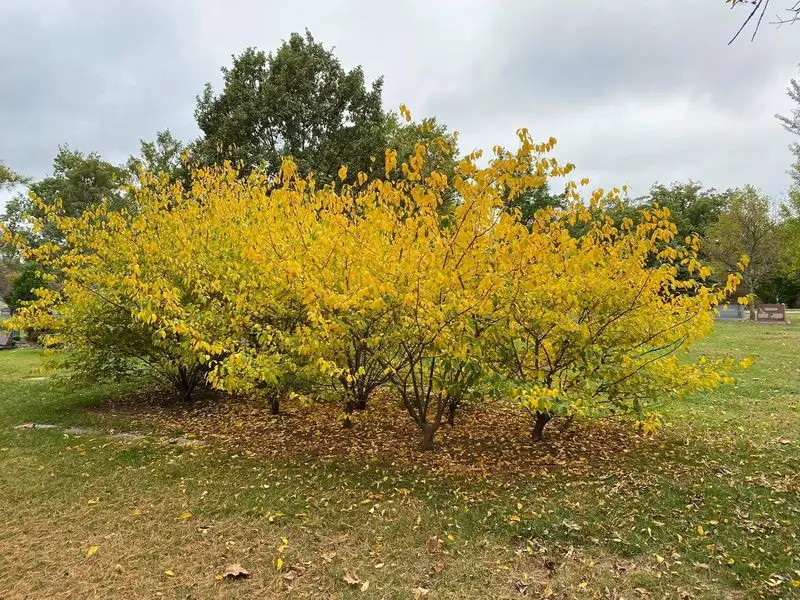
Lindera benzoin, with its aromatic leaves, offers seasonal beauty with yellow flowers and red berries. Perfect for wooded areas, it supports various wildlife. Its early blooms provide nectar for pollinators, while berries feed birds in fall. Adaptable to different light conditions, it thrives in moist, well-drained soils. This shrub adds structure to naturalistic gardens and can be used in hedgerows. Its leaves offer a subtle, spicy aroma when crushed. A versatile choice for enhancing habitat diversity in shaded gardens. Plant for an engaging, sensory garden experience.
Mountain Laurel
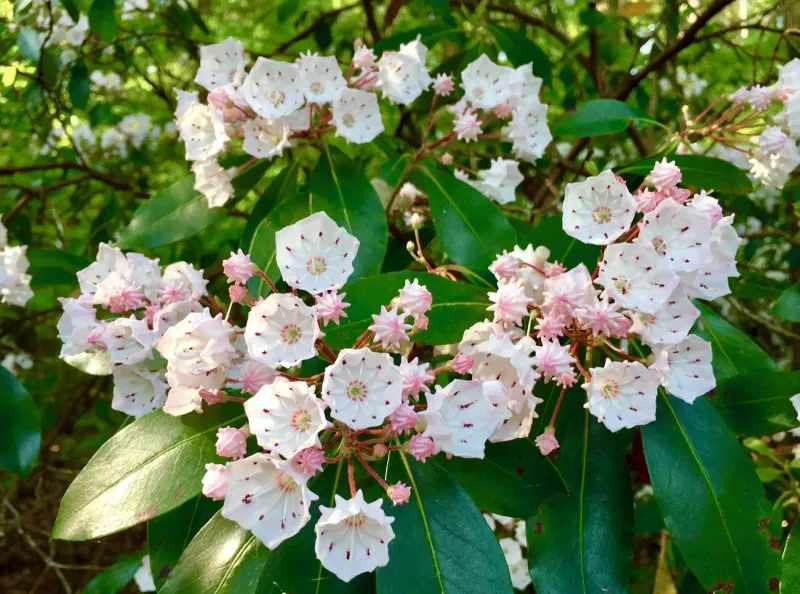
Kalmia latifolia dazzles with its intricate pink and white flowers. Thriving in acidic, well-drained soils, it prefers dappled sunlight. This evergreen shrub provides year-round interest with its glossy foliage. Ideal for woodland gardens or as a specimen plant, it offers architectural beauty. Its flowers attract bees, supporting pollinators. While it requires specific soil conditions, the reward is a stunning floral display. Plant in groups for a spectacular impact. A staple in northeastern gardens, bringing elegance and ecological balance.
American Beech
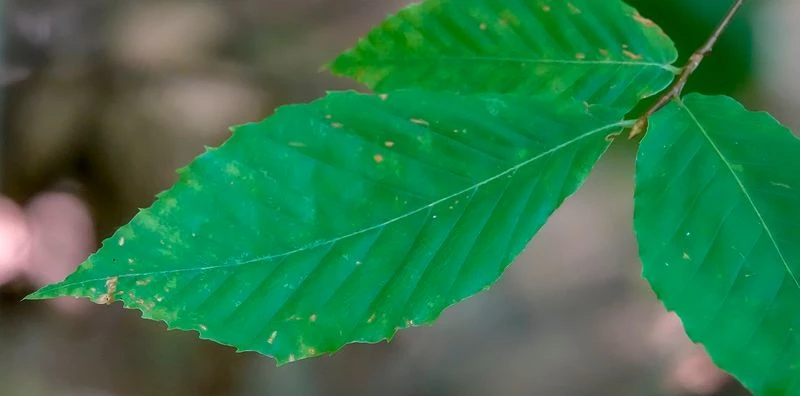
Fagus grandifolia canopies forests with its smooth, silvery bark and lush foliage. In autumn, leaves turn a striking bronze, creating a picturesque scene. This deciduous tree thrives in well-drained soils and can tolerate a range of light conditions. Its nuts provide food for birds and mammals, supporting biodiversity. Ideal for larger landscapes, it offers shade and structural beauty. As a native, it integrates seamlessly into natural ecosystems. Plant for a majestic statement piece that fosters wildlife. A beloved choice for those seeking timeless elegance and ecological value.
Redbud
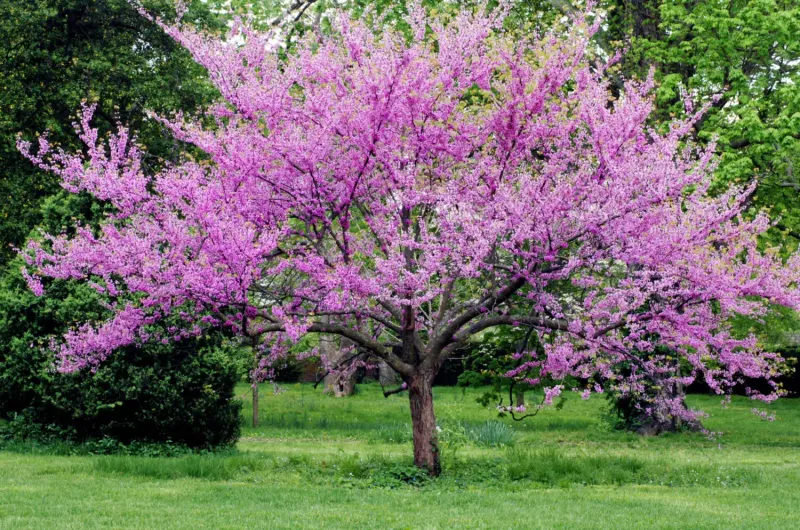
Cercis canadensis bursts into pink blooms before leafing out, signaling spring’s arrival. This small tree thrives in well-drained soils and sunny to partly shaded spots. Its heart-shaped leaves provide interest throughout the growing season. Ideal for small gardens or as an understory tree, it adds charm and color. The flowers attract early pollinators, supporting ecosystem health. As a native, it integrates well into existing landscapes. Plant for a vibrant spring display and enjoy its beauty year-round. A delightful option for enhancing garden diversity and seasonal interest.
White Wood Aster
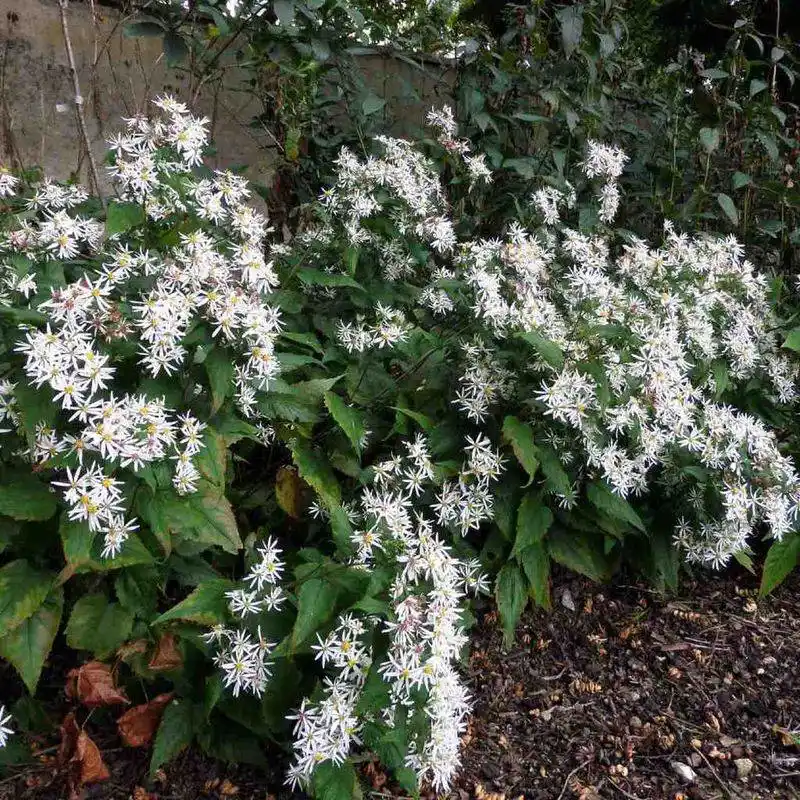
Eurybia divaricata offers delicate white flowers that brighten shaded areas. Thriving in woodland gardens, it prefers well-drained soils. Blooming in late summer to fall, it provides nectar when few others do. These asters attract butterflies, supporting local fauna. Perfect for naturalizing under trees or along paths, they require minimal upkeep. Plant en masse for a charming ground cover. Their resilience makes them a valuable addition to any shade garden. A native gem that brings subtle beauty and ecological benefits.
Serviceberry
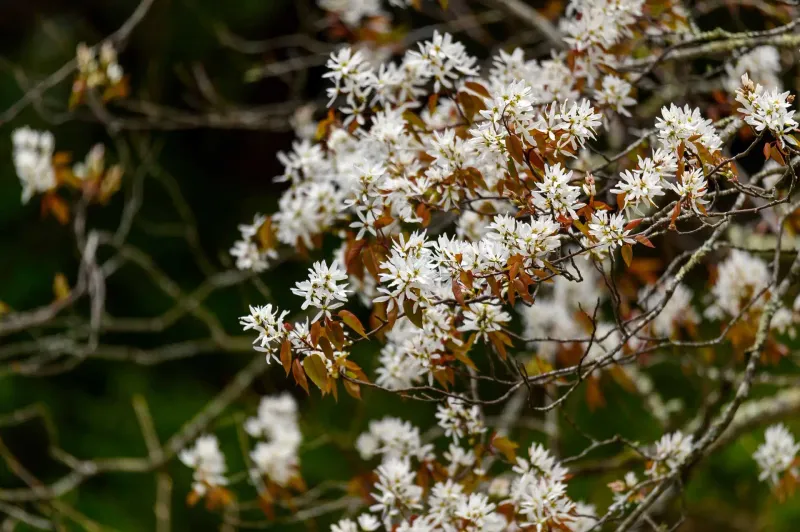
Amelanchier canadensis delights with its white spring flowers and edible berries. Thriving in various soils, it prefers full sun to partial shade. This multi-season shrub attracts pollinators and feeds birds, enhancing garden biodiversity. Its berries, sweet and juicy, are a treat for humans as well. Use as a hedge or standalone feature for year-round interest. The autumn foliage adds a splash of color with vibrant hues. Easy to grow, it integrates well into native plantings. A versatile choice for those seeking beauty and ecological function.
Wintergreen
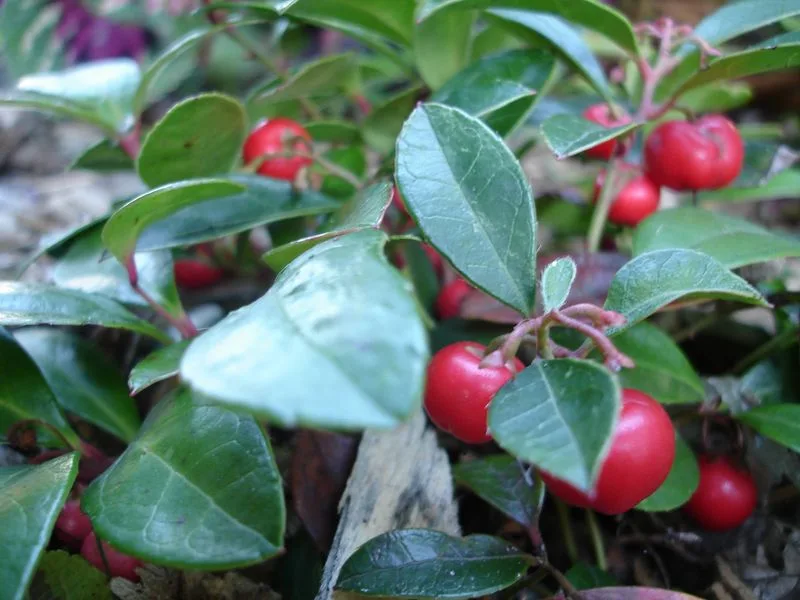
Gaultheria procumbens adds a carpet of green with its glossy leaves. Preferring acidic, well-drained soils, it’s ideal for woodland gardens. Its red berries add winter interest, attracting birds and wildlife. The leaves emit a minty aroma when crushed, providing a sensory experience. Use as a ground cover or in containers for year-round beauty. Adaptable to many conditions, it requires little maintenance. A native plant that supports local ecosystems while adding charm. Perfect for those seeking a naturalistic, low-maintenance garden solution.
Sweet Fern
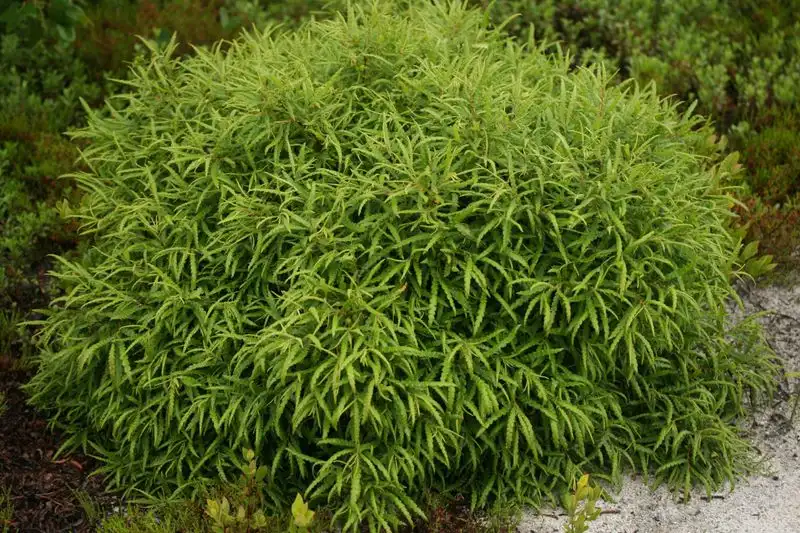
Comptonia peregrina, despite its name, is not a fern but a low-growing shrub with aromatic leaves. Thriving in sandy, well-drained soils, it’s perfect for challenging sites. Its foliage emits a pleasant scent, adding an extra dimension to gardens. Ideal for erosion control, it stabilizes soil effectively. This native shrub supports wildlife, providing habitat and food. Use in naturalistic plantings or as a ground cover. Its adaptability and resilience make it a valuable addition to the landscape. A unique option for enhancing garden fragrance and structure.
Wild Lupine
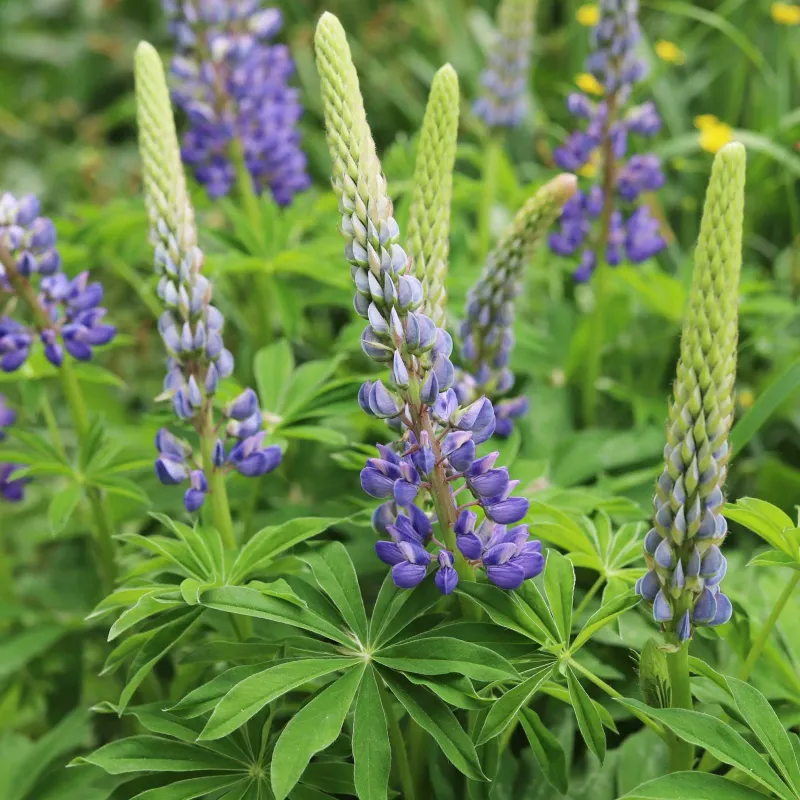
Lupinus perennis captivates with its tall spikes of blue flowers. Preferring sunny, well-drained sites, it adds a bold statement to meadows. These flowers attract bees and butterflies, supporting local pollinators. As a nitrogen-fixing plant, it enriches soil naturally. Perfect for wildflower gardens or naturalistic plantings, they require little care once established. Plant in groups for a dramatic effect. Their vibrant blooms provide a stunning contrast against grasses. A native beauty that enhances ecological health and visual appeal.
Mayapple
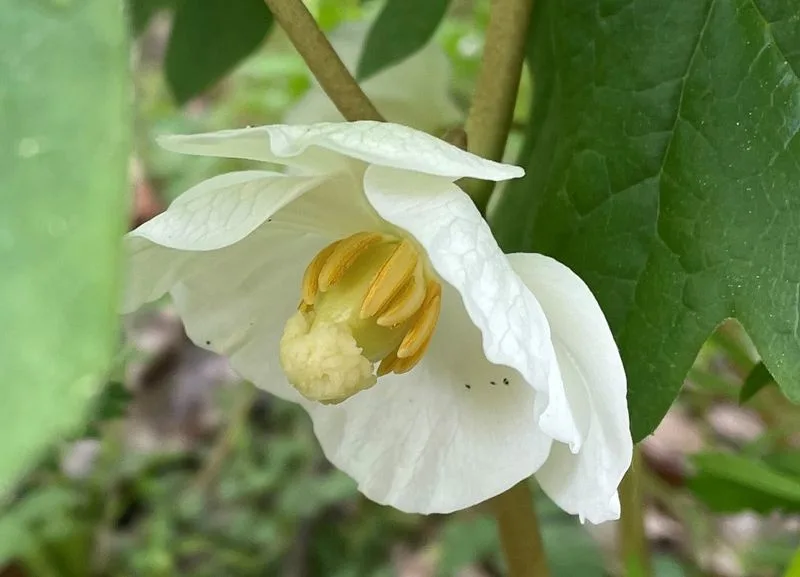
Podophyllum peltatum offers unique, umbrella-like leaves that create a lush ground cover. Preferring moist, shaded woodlands, it thrives in naturalistic settings. Its solitary white flower gives way to small fruits, which are toxic unless fully ripe. This plant provides early season cover for woodland creatures. Ideal for adding texture and interest to shade gardens. While they require some care initially, they naturalize beautifully. A native choice for those looking to introduce unique foliage to their landscapes. A whimsical addition for enhancing biodiversity in shaded areas.
Wild Strawberry
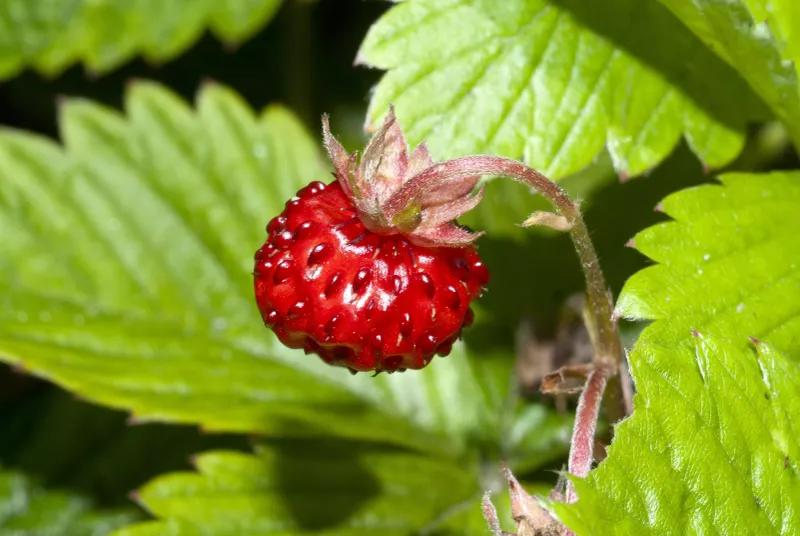
Fragaria virginiana spreads through runners, providing an edible ground cover. Thriving in sunny, well-drained areas, it’s perfect for edible landscapes. These plants offer small, sweet strawberries that are a delightful treat. Their flowers attract pollinators, supporting garden health. Use them to create a living carpet in sunny borders or meadows. Their low-growing habit makes them ideal for stabilizing soil. Easy to grow, they require minimal care once established. A cherished native plant that brings both beauty and bounty to gardens.
Butterfly Weed
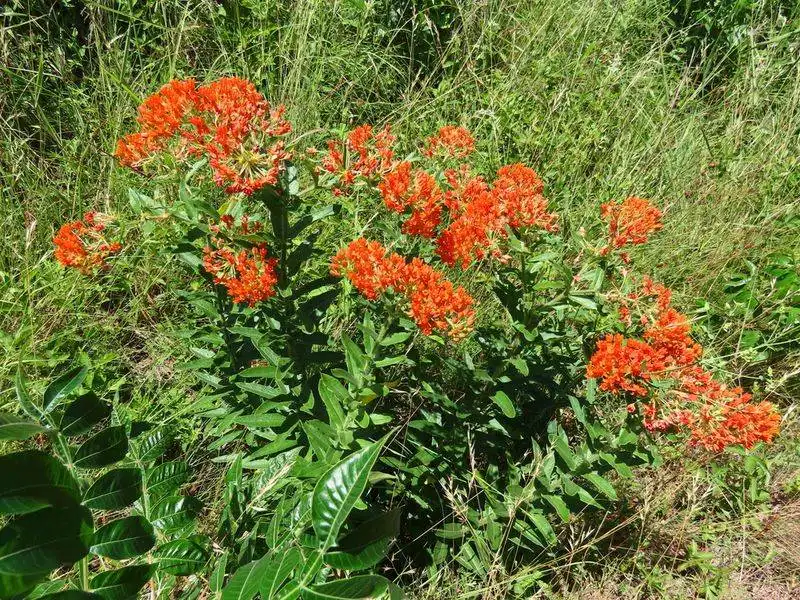
Asclepias tuberosa is renowned for its bright orange flowers that attract monarchs. Thriving in sunny, well-drained areas, it adds vibrant color to landscapes. These perennials require little water, making them ideal for sustainable gardens. Their blooms provide nectar, supporting pollinators throughout summer. Plant in masses for a bold visual impact. As a native milkweed, it plays a crucial role in the life cycle of monarch butterflies. A beautiful and functional addition to gardens seeking to support wildlife. Their striking appearance is matched by their ecological importance.

